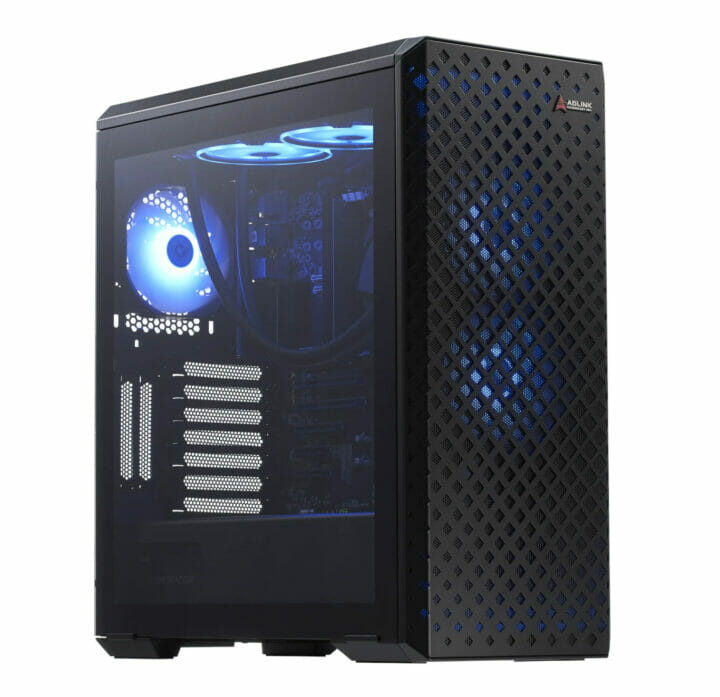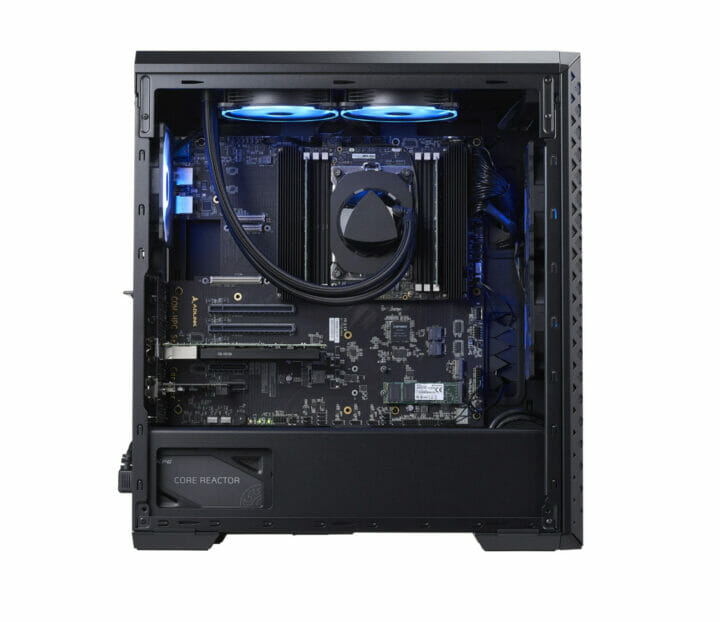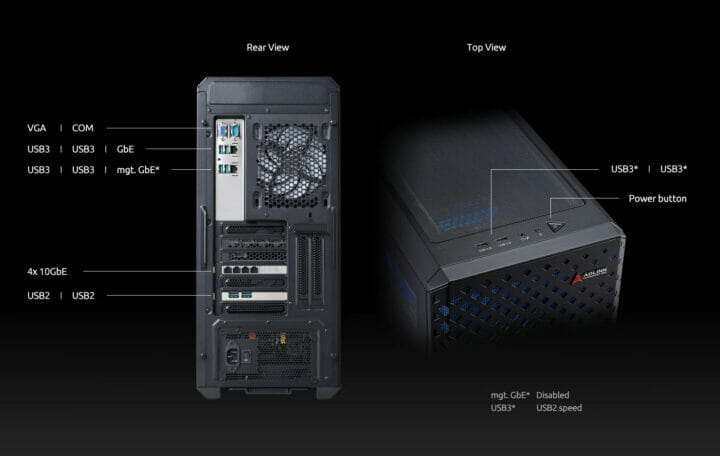The AVA Developer Platform was announced together with ADLink COM-HPC Ampera Altra server module for embedded applications with up to 80 64-bit Arm cores, up to 768GB DDR4, 4x 10GbE, and 64x PCIe Gen4 lanes.
The AVA Developer Platform is not fitted with the top-end COM-HPC module, but still, with a 32-core COM-HPC Ampere Altra module fitted with 32 GB DDR4 memory, plus a 128 GB NVMe M.2 SSD, and an Intel Quad X710 10GbE LAN card, it still makes an impressive workstation for native Arm development. We did not know the price the last time, but now we do as the workstation is available for pre-order for $5,450.
 AVA Developer Platform specifications:
AVA Developer Platform specifications:
- SoM – COM-HPC Ampere Altra module with Ampere Altra 32-core 64-bit Arm Neoverse N1 processor up to 3.3 GHz (TPD: 60W), 32 GB DDR4 memory
- Storage – 128 GB NVMe M.2 SSD (From photos see below: extra M.2 socket, 2x SATA ports)
- Mainboard – COM-HPC Server carrier board
- Video – VGA port
- Networking – Intel Quad X710 10GbE LAN card, 1x Gigabit Ethernet, 1x RJ45 port for management (but disabled)
- Expansion – 3x PCIe x16 and 2x PCIe x4 slots (from photos)
- USB – 4x USB 3.0 ports and 2x USB 2.0 ports [rear I/O], 2x USB 3.0 ports [front panel] (somehow at USB 2.0 speeds. e.g. 480 Mbps)
- Serial – COM port (DB9)
- Misc – Power button; liquid cooling for silent, fanless operation
- Power Supply – 750 Watt power supply
- Dimensions – TBD (Standard tower enclosure)
 The specifications are preliminary as based both on limited public specs and the new higher resolution photos available now. It should be possible to add extra storage via the M.2 NVMe sockets and SATA ports, and graphics cards or AI accelerator via the three remaining PCIe x16/x4 slots.
The specifications are preliminary as based both on limited public specs and the new higher resolution photos available now. It should be possible to add extra storage via the M.2 NVMe sockets and SATA ports, and graphics cards or AI accelerator via the three remaining PCIe x16/x4 slots.
The AVA Developer Platform is the first Arm SystemReady SR-compliant SOAFEE’s reference development platform so far. That means the system will boot any compliant Linux distributions such as CentOS, Ubuntu, and Yocto Linux, just like you can boot ISO images on pretty much any x86 hardware, and the SOAFEE adds functional safety and real-time capabilities required for autonomous workloads.
The $5.495 price tag looks steep but it should be compared to other similar workstations. GIGABYTE ThunderXStation with two 32-core Cavium ThunderX2 processors would sell for $13,500 (in 2018) with 32GB RAM and a 960 GB NVMe SSD, while the Ampere eMAG would start at $3,300 with an Ampere eMAG 8180 32-core Armv8 processor @ 2.8GHz / 3.3 GHz (which looks to be the previous name for Ampere Altra 32-core CPU Wrong!), a 32GB DDR4 ECC RAM and a 240GB SATA SSD. But if I look at the price today on Avantek such a system would cost around $4000 with a fancy windows chassis with LED like the AVA platform. The Intel Quad X710 10GbE LAN card should add about $450 to $500 to the price, so we’re still short $1,000, or maybe I’m missing something.
Thanks to Willy for the tip.

Jean-Luc started CNX Software in 2010 as a part-time endeavor, before quitting his job as a software engineering manager, and starting to write daily news, and reviews full time later in 2011.
Support CNX Software! Donate via cryptocurrencies, become a Patron on Patreon, or purchase goods on Amazon or Aliexpress





